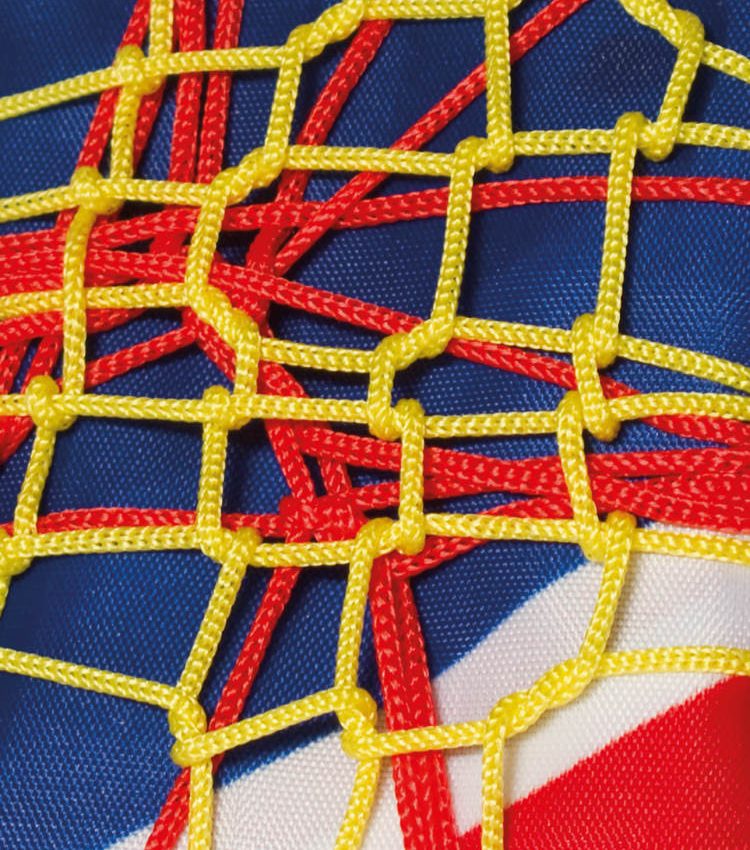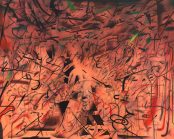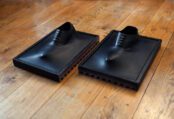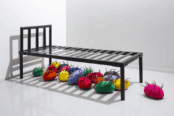241247 also known as Dario Vigorito is a London based audio-visual artist whose agit-punk visual work is recognizable for its bold arrangement of political content.
Identified only by numbers, 241-24-7 the project was envisioned as a man-machine nameless business unit, suggesting a manufactured non-identity. Characterised by generic, low budget advertising aesthetics (i.e. two for the price of…all day) as a critique of consumer lifestyle the work has agitated (and satirised) an eclectic audience of fashion, art, design and commercial creatives.
Concurrent with his individual works Vigorito has collaborated on visual projects with musicians, artists and brands such as Aries, Prada, Adidas, Neneh Cherry, Robyn, and Grace Jones. And has toured live projects by video artist Chris Cunningham (2006-2011) and art rock band Selfish C**t (2005-2011). Experiences that shaped his understanding of how live performances manipulate sound and vision to control audiences. A technique which became manifest as The Aeknown (2012), an ongoing performance project with artist Martin Tomlinson which continues to tour sporadically for love or money.
Since 2016 he has expanded on the simplicity of confrontational works developing live cinema experiences to engage new audiences in order to “liberate the image from its hermetically sealed containment”.

How did you get started?
I moved to London from Italy when I was 18. I did a BA in Art and Design at Central Saint Martins College of Art that, in the end I felt rather uninspiring. I have met most of my professional collaborators and partners-in-crime from experiencing London to the fullest, with its constant flux of different people and situations. These experiences most definitely shaped my practice.
Who has inspired you so far and why?
For over a decade, I was assistant to the director/ artist Chris Cunningham (Video Artist, Bjork & Aphex Twin Collaborator) . His dedication to his vision and passionate work ethic has had a big influence on me plus he’s been a good friend and mentor. He taught me to be methodical and to always stay focused on the work however long it takes.
Another inspiration is the performer Martin Tomlinson (of Selfish C**t) as well as the East London art, music and fashion scene of the 00’s. It was such a vibrant time and remains an important source of inspiration. For me there was a fearless attitude to making art then, the freedom to do things wrong, to touch a fire, which guided my sense of craft and an almost ritualistic element to my creative process. Both Chris and Martin, inadvertently and in different ways, spoke to me about the right of the artist to be playful, disturbing, or disruptive.
How would you describe your technique?
Fury and discovery are the two fundamental elements in common to every form I work in whether it be video, audio, photographic montage, or a single image.
I collect and catalogue a tremendous amount of material; printed images, video footage, sound recordings, notes, and artefacts. Whatever work I undertake, it will always involve a search through my extensive audio-visual library. This sometimes distracts me from the original task but mostly it opens up possibilities and draws up the routes to explore; like searching for words in a personal vocabulary to construct a poetic composition. I also see it as diving into a tsunami of images and ideas touching upon a wider collective unconscious – in this I see a fertile ground for discourse, one that calls upon mythological speech patterns, which I find compelling and effective.
To what extent do you plan a work before your start?
The planning usually comes as an idea that has already come into my orbit. In most cases it takes shape as an image in my head. Sometimes the image is a metaphor for a persistent thought whether it be about an event, a political situation or a more personal or spiritual question. However, sometimes the image comes first, disconnected from any thought, and I am bedazzled by its sudden appearance, and I let the image lead me where it would like me to go.
Once I set off on the path of the image, it is a matter of endless lists of plans, things to do and develop in order to fully explore the image-idea. I don’t usually start with a medium in mind, I let this choice be dictated by the process itself.
What has been the most important discovery in your practice to date?
I think I can only put importance on what is yet to be discovered, which is the essence of my practice, my search. Every work beholds an important discovery that is passed onto the next. It is usually this discovery that allows me to finally come to a closure with a project and move onto the next.
I have often been consumed by the art-making process in a very old fashioned and perhaps pathetic “rock and roll suicide” sort of way, working obsessively day and night without sleep, surviving on coffee and cigarettes. My mind ends up suffering and my body gets sick. Working this way has led me to one of the most enduring discoveries of my practice; namely, Zen meditation and breathing work. It is helping me to find a healthier balance in my feverish desire to explore and work 24/7, and it is also opening up new ways to approach ideas in my practice.
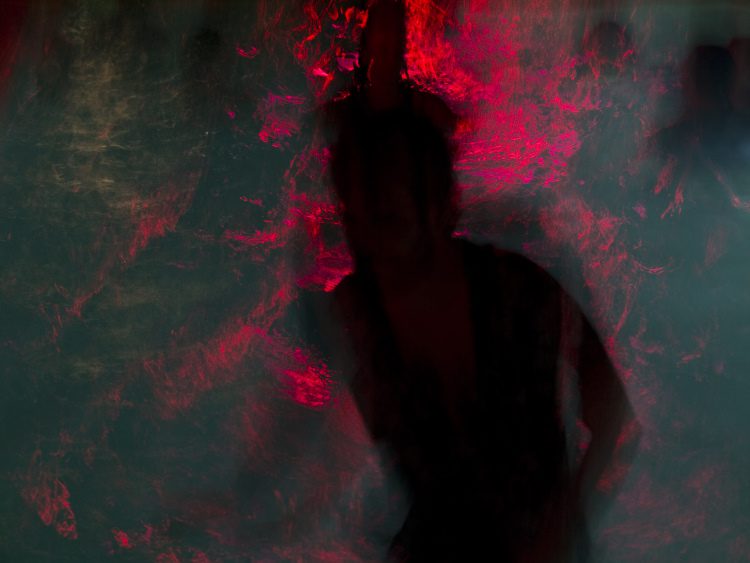
What is your most successful artwork and why?
A live show I did in Antwerp in 2019 is one of my favorite works to date. It took place at “Forbidden City”, a buzzing art gallery set up in an ex-porn shop near the Antwerp Cathedral, right in the city center. The show combined a record launch, live video performance, installation, and DJ sets that merged the best parts of a gallery opening, a museum shop and an underground night club. Organized by professor, artist and musician Trish Lyons, director of the art music label “LoveHowlMuse” It was a great success on all levels: artistic, commercial and social.
How have people reacted to your work?
In the live shows I have been pleased to see people, especially young / non-artist types responding to the work in a positive and emotional way. I strive to take my work outside the gallery context for my desire to speak to audiences not accustomed to an art discourse. As most of my live shows are politically charged but exploring issues from an unconscious /dream like point of view, it is rewarding to see it resonating with people.
What interpretation of your work has surprised you the most?
Once I did a live show in a church based on Solomon’s Song of Songs, reflecting upon a personal relationship crisis I was experiencing at the time. The show featured images of male dolphins mating with each other, images of Jesus being baptized by St. John juxtaposed with images of waterboarding interrogations, and Disney’s Snow White rotting apples transforming into skulls under rough seas. Afterwards a woman approached me and kindly said how much she loved the work about the immigrant crisis in the Mediterranean. That was definitely surprising.
Where should people start with your work?
This is a question I have often asked myself when thinking about ways of framing my body of work and I’m not really sure I have a definitive answer. It is like navigating a vast laboratory of interconnected experiments.
One of my past websites – I have built many over the years again as an on-going experimental artwork – took on this concept of a search without end, building pages with links upon links allowing the viewer to become totally lost within the site. I used to get lost myself and had no idea where each of the millions of buttons would take me.
I imagine the best starting point is my current website (which is organized into three sections: visual art, live and commercial. Each section has its own organizing structure. For example, visual art is divided into seven galleries each with a different narrative thread with artworks that span across different years.
What’s next for your artistic practice?
I think as the world changes so dramatically and so quickly, after experiencing Brexit, and the pandemic, I feel it is better not to make any precise plans but rather to be open to changes and to work with the flow of things. So, for now, I have been reading and researching broadly across the arts and humanities, from the philosophy of Rudolf Steiner to the architecture of Zaha Hadid. I am currently reading the NOT series of books from the Italian publishers NERO. It is a graphically beautiful and eclectic mix of contemporary philosophy, politics and speculative fiction. I’d like to think of this research and reading as preparing a mental canvas. I am sure the next creative step will start from this reflective pause.
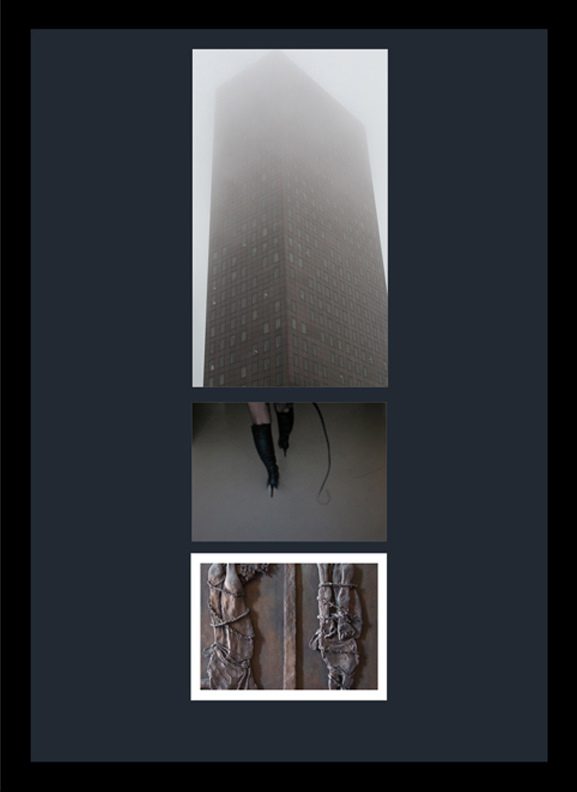
I often explore my creativity in a more commercial arena and crossing the boundaries between art and advertising is always fraught with risk and reward.
What is your favourite quote about art?
The first that comes to mind is a Francis Bacon quote; “The job of the artist is to deepen the mystery”
I have it written on a blackboard wall in my kitchen amongst some Zen studies notes and various tasks and to-do lists.
It goes well with another line right below, “True inquiry doesn’t land on an answer it opens onto a mystery that is meant to be lived” which is from psychologist and meditation teacher Tara Brach.
I think I’ve been doing good with that task.
Instagram :

The aim of art is to represent not the outward appearance of things, but their inward significance. – Aristotle

